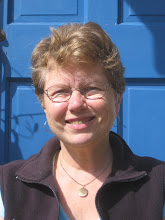The Emergence of Sexual Desire in Women's Novels – Introduction
“In their rebellion against the strictures of patriarchy, women writers have increasingly become aware of – and articulate about – their own sexual feelings. The gradual emergence of physical desire as a subject is reflected in the novels of British women between the mid-19th and mid 20th centuries. Those writers, who consciously or unconsciously project passion in their work, at the same time protest male dominance and the institutions of western culture shaped by male dominance.
Included here are love scenes and related expressions of women’s amorous feelings form the works of seven novelists of literary distinction, chosen to show a progression. Starting with the three Brontë sisters, chapters proceed chronologically to Olive Schreiner, Dorothy Richardson, Rosamond Lehmann and Doris Lessing. All but Richardson are of mixed ancestry, and all by Anne Brontë have spent some time outside England. These circumstances may have made possible greater freedom of expression in their time. With the possible exception of Lehmann, all protest patriarchal institutions. The female reader may at times identify with the heroine subliminally and, as in a fairy tale, find a greater understanding of her own nature. Art transmutes the unacceptable to a form that can be taken in by the psyche.
Up until 1847, with one notable exception, women’s novels concerned with courtship and marriage conformed to the strict sexual taboo of the period. The exception was Mary Wollstonecraft, best known for her polemical The Vindication of the Rights of Women, published in 1792. For this treatise she has the honor of being the first rebel against patriarchy in Britain. She later fell in love with an American, had a child, and, rejoicing in the discovery of love, wrote The Wrongs of Women, or Maria. She died in childbirth before the novel was finished and her husband, William Godwin, published the long fragment in 1797. As Ellen Moers remarks, it ‘contains Wollstonecraft’s most radical feminism and most powerful writing on a woman’s passion,’ putting emphasis on a woman’s right to passion. Like her poignant love letters, the unfinished novel is finding renewed attention of late, but at the end of the 18th century, it did not reach the wide reading public responsive to Jane Austen’s gently satiric novels, nor, a generation later, her own daughter, Mary Godwin Shelley’s romantic horror story, Frankenstein (1818).
Then, fifty years after Wollstonecraft’s Maria came the publication in 1847 of three novels by three remarkable sisters, Charlotte (1816-1855), Emily (1818-1848), and Anne Brontë (1820-1849), writing under the androgynous pseudonyms of Currer, Ellis and Acton Bell. All three sisters, in very different ways, wrote about a woman’s attraction to a man, and all three presented heroines who rebelled against a male-dominated society.
Jane Eyre: An Autobiography, Charlotte’s masterpiece, left staid literary critics gasping with indignation. Discerning reviewers like George Henry Lewis, immediately recognized its distinction. The book had wide sales, brought lasting success to its young publisher, but was disparaged all the more when it became known that Jane Eyre was the work of a young, unmarried woman. Some critics even said it was coarse. A century later the post-Freudian Richard Chase stated his belief that the novel’s power arose from its mythologizing of Jane’s confrontation with masculine sexuality.
Anne’s novel of note was her second, The Tenant of Wildfell Hall, published the following year. While lacking the passion of her sisters’ novels, it was criticized for its too vivid depiction of debauchery. However, Anne wrote with a high moral purpose: she dared to make a strong plea for divorce at a time when all rights in marriage were for men only. In 1930, George Moore referred to the book as ‘the literary Cinderella’ of the Brontë books. With the advent of Women’s Studies, the book is finding renewed attention.
Emily’s great work, Wuthering Heights, has received its widest acclaim for the story of the undying love between the willful Catherine and the foundling Heathcliff.
An early and lasting influence on Emily and Charlotte was the store of Irish legends and Yorkshire folk tales, which the Brontë children learned from their father. The Reverend Patrick Brontë’s life and antecedents had a marked effect on his children’s lives and work. Perfervid and devout Evangelical parson that he was, Reverend Brontë may well have been surprised at his own influence.
In Part I, we shall consider the novels, as well as the unique background, of the Brontë sisters.
Part II will relate to the evolution in the literary expression of sexual desire by British women novelists during the century between the triple publication date of 1847 of the Brontës’ first published novels and the 1960s works of Doris Lessing, The Golden Notebook and The Four-Gated city.
These seven writers, all of recognized literary merit, have been chosen as most clearly exemplifying the gradual articulation of feminine desire at various levels of consciousness in the novels of women writers during this crucial time-span.”



0 Comments:
Post a Comment
<< Home